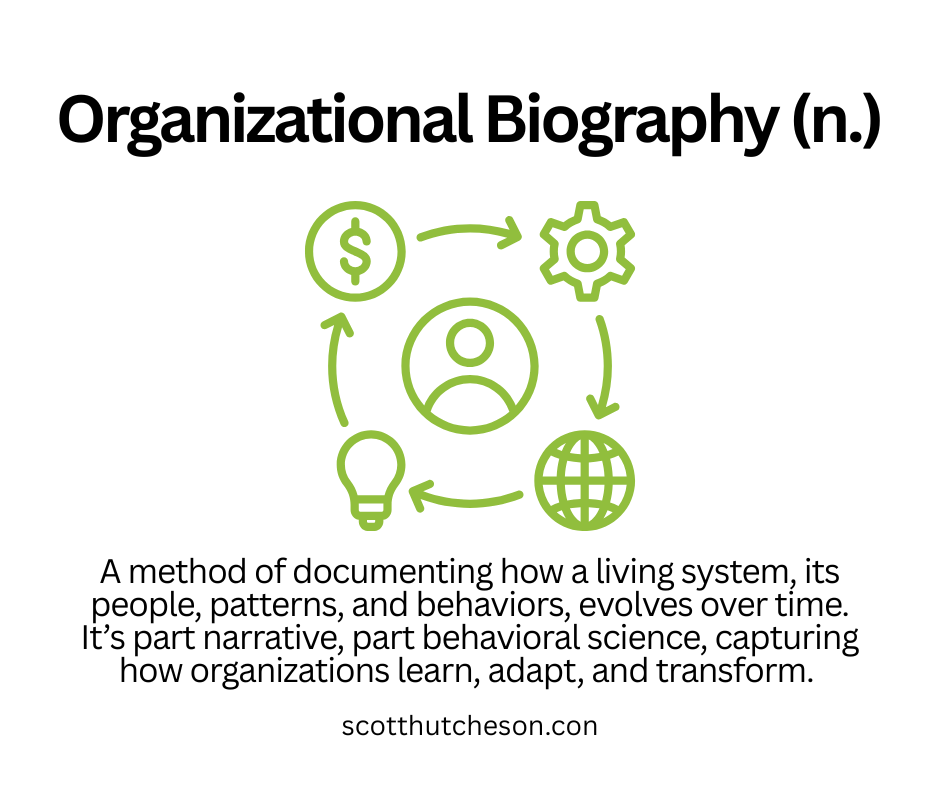Organizational Biography
Every living system has a story written in behavior.

Organizations, like living systems, evolve over time. They experience formative years, critical transitions, moments of adaptation, and periods of renewal. An organizational biography captures that evolution, not as a timeline of events, but as a living narrative of behavior, culture, and change.
As a biosocial scientist, I approach this work through the biology of behavior, observing how patterns form, how norms stabilize, and how systems learn. The result is more than a record; it’s a mirror. An organizational biography helps leaders see their organization’s behavioral DNA in motion: what’s emerging, what’s enduring, and what’s ready to evolve.
Why commission an organizational biography?
- Sense-making in real time – Understand your transformation as it unfolds, not just in retrospect.
- Cultural insight – Trace the behavioral signals that define your culture and how they change under pressure.
- Leadership learning – Capture lessons that future leaders can use to navigate complexity with greater awareness.
- Legacy and alignment – Preserve the story of why your organization changed, how it adapted, and what it learned along the way.
How it works
An organizational biography can unfold alongside a major transformation, merger, or milestone. Through interviews, observation, and document synthesis, I map the organization’s behavioral journey, its signals, pathways, and patterns, translating them into a coherent, evidence-based narrative. The finished biography becomes both a sense-making tool for insiders and a teaching artifact for others in your field.
Deliverables may include:
- A written case study or narrative report
- A multimedia or documentary-style chronicle
- Executive or board-level briefings and teaching materials
The process is designed to honor the organization’s unique history while revealing the biology of its behavior, how it adapts, aligns, and grows.